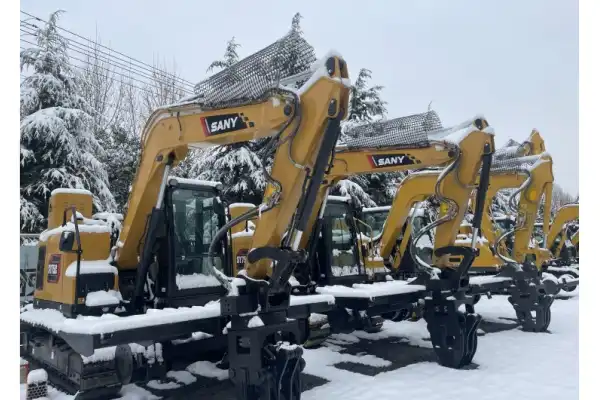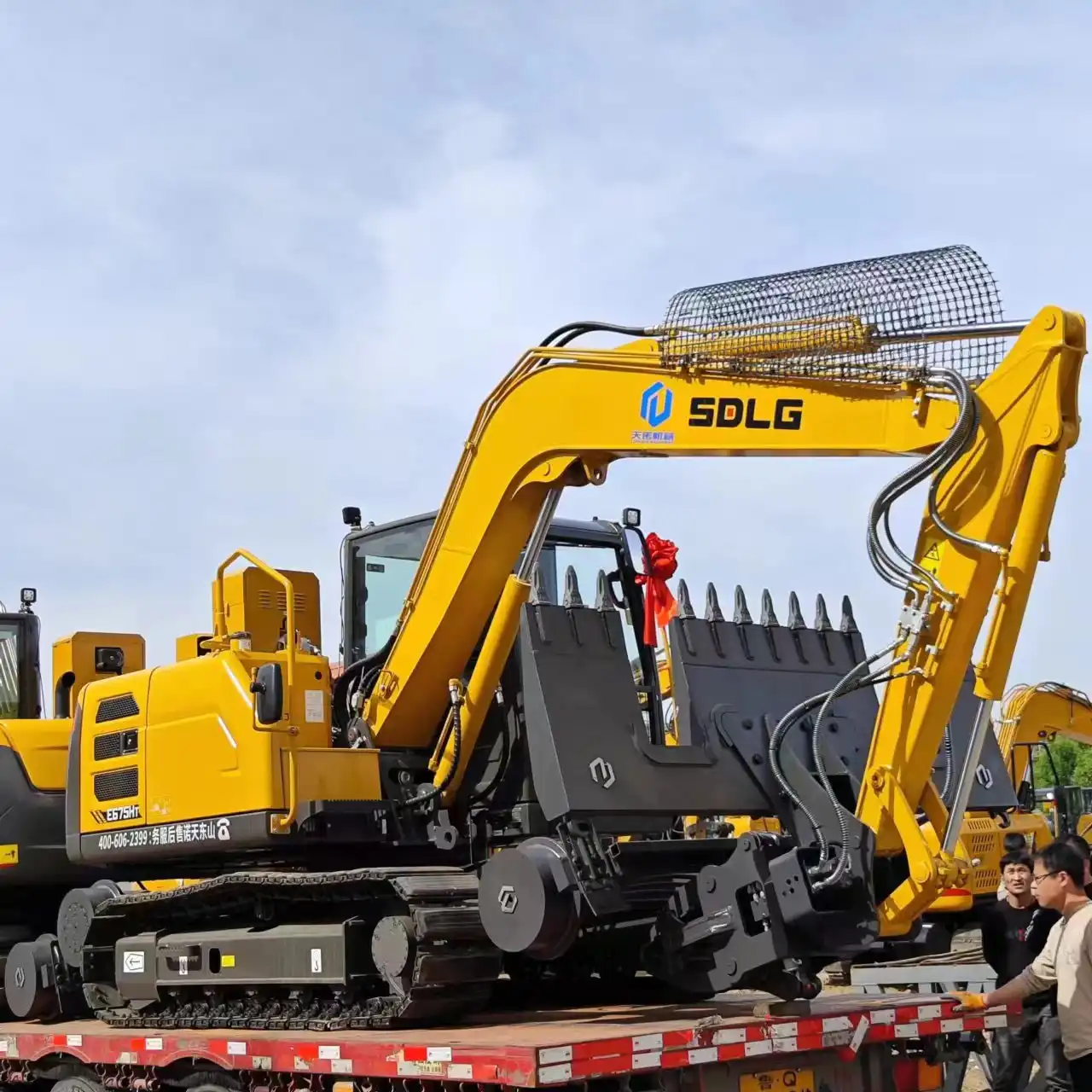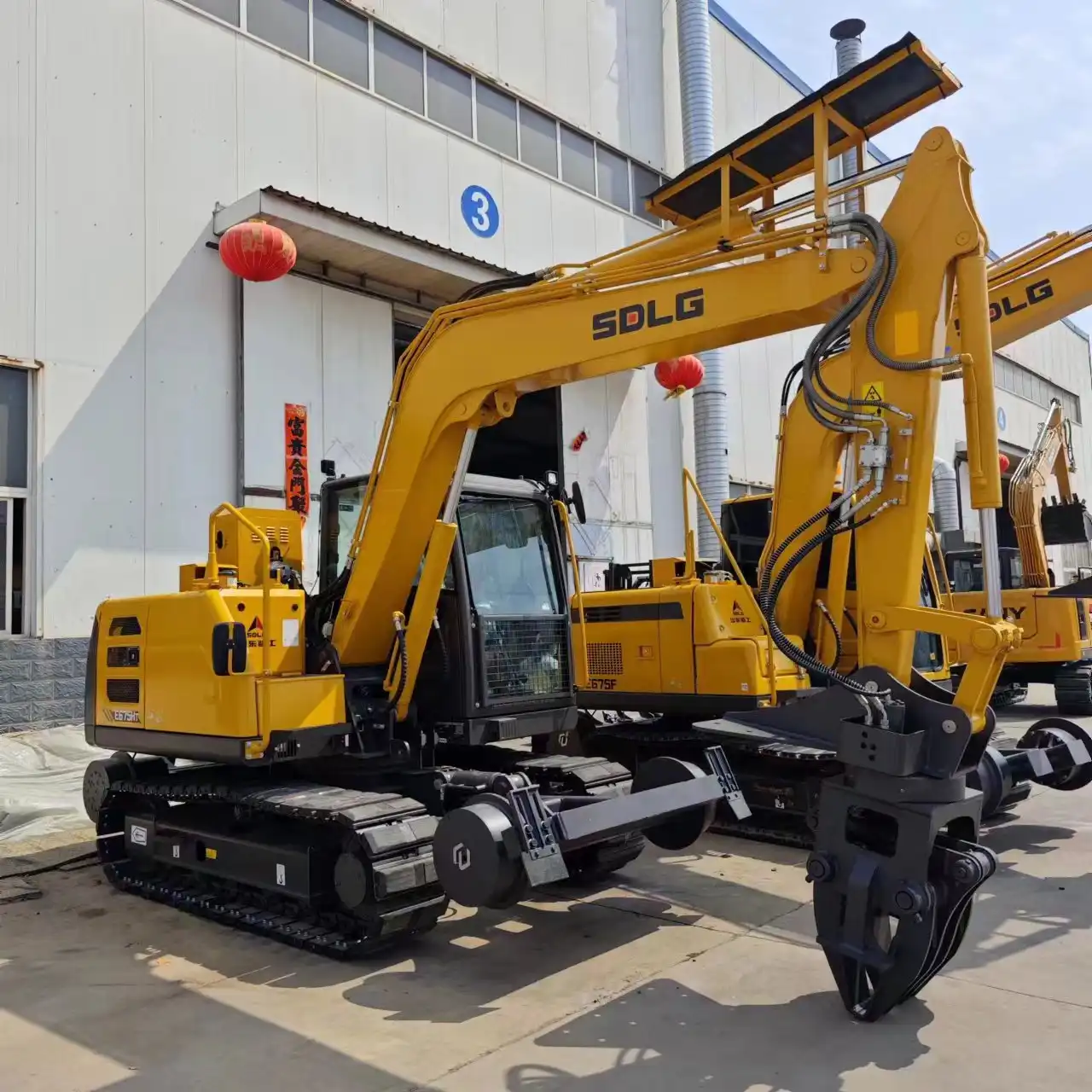How often should railroad ties be replaced?
Railroad ties, also known as sleepers, are crucial components of railway infrastructure that require regular replacement to ensure safe and efficient rail operations. The frequency of railway tie replacement depends on various factors, including the material used and environmental conditions. Generally, wooden sleepers need replacement every 20-30 years, while concrete sleepers can last up to 40-50 years. However, high-stress areas may require more frequent inspections and replacements. To streamline this process, many railway maintenance teams utilize specialized equipment like the railway sleeper changer, which significantly improves efficiency and precision in tie replacement operations.
Wooden Sleepers: Every 20-30 Years
Factors affecting wooden sleeper lifespan
The lifespan of wooden railway ties is influenced by several key factors. Environmental conditions play a significant role, with exposure to moisture, temperature fluctuations, and UV radiation accelerating degradation. The type of wood used also impacts durability, with hardwoods like oak and tropical varieties often outlasting softwoods. Treatment methods, such as creosote or copper-based preservatives, can extend the life of wooden sleepers by protecting against decay and insect infestation.
Traffic load and frequency are crucial considerations when changing railroad ties. Heavy freight lines or high-speed passenger routes may cause faster wear on sleepers compared to less frequently used tracks. Proper installation and maintenance practices, including adequate drainage and ballast condition, can significantly affect the longevity of wooden ties.
Signs of degradation in wooden railway ties
Identifying deterioration in wooden sleepers is essential for timely replacement. Visual inspections can reveal obvious signs such as splitting, cracking, or warping. Fungal growth, indicated by discoloration or visible mushroom-like structures, signals internal decay. Loose spikes or rail fasteners may indicate that the wood has lost its ability to hold these components securely.
More advanced detection methods include impact echo testing, which can identify internal voids or decay, and ultrasonic testing to assess the structural integrity of the wood. Regular monitoring of these signs allows maintenance teams to prioritize replacements and ensure track safety.
Eco-friendly alternatives to traditional wooden sleepers
As environmental concerns grow, the railway industry is exploring sustainable alternatives to traditional wooden ties. Composite sleepers, made from recycled plastics and rubber, offer increased durability and resistance to rot. These materials can last up to 50 years and are recyclable at the end of their life cycle.
Another innovative option is the use of engineered wood products, which combine wood fibers with resins to create sleepers that are more resistant to decay and have a longer lifespan than traditional wooden ties. These alternatives not only reduce the demand for timber but also decrease the frequency of replacements, leading to lower maintenance costs and reduced environmental impact over time.

Concrete Sleepers:40-50 Years
Advantages of concrete sleepers over wooden ones
Concrete sleepers offer several benefits compared to their wooden counterparts. Their extended lifespan of 40-50 years significantly reduces the frequency of replacements, leading to lower long-term maintenance costs. The stability and weight of concrete sleepers provide better track geometry retention, resulting in smoother rides and reduced wear on rolling stock.
Concrete ties are less susceptible to environmental factors like moisture and insect damage, making them ideal for areas with challenging climates. They also offer superior lateral track resistance, which is crucial for high-speed rail lines and heavy freight corridors. The uniform nature of concrete production ensures consistent quality and performance across all sleepers, unlike wooden ties that may vary in quality.
Maintenance practices to extend concrete sleeper life
While concrete sleepers are durable, proper maintenance can further extend their service life. Regular inspections are crucial to identify early signs of deterioration, such as cracking or spalling. Addressing these issues promptly through crack sealing or partial replacements can prevent more extensive damage.
Maintaining proper drainage and ballast conditions is essential to prevent water accumulation, which can lead to erosion and undermining of the sleepers. Periodic tamping and ballast cleaning help maintain track geometry and reduce stress on the concrete ties. Additionally, ensuring correct fastener tension and replacing worn fastening components can prevent undue stress on the sleepers and extend their lifespan.
Innovative concrete sleeper designs for longevity
Advancements in concrete technology have led to innovative sleeper designs that offer even greater longevity and performance. Fiber-reinforced concrete sleepers incorporate materials like steel or synthetic fibers to improve tensile strength and crack resistance. These designs can better withstand the dynamic loads of modern rail traffic.
Pre-stressed concrete sleepers use high-strength steel wires or strands to create a compressive force within the concrete, enhancing its ability to resist tensile stresses and preventing cracking. Some manufacturers are exploring the use of geopolymer concrete, which offers improved durability and a lower carbon footprint compared to traditional Portland cement concrete.

Focus On Monitoring High-Stress Areas
Identifying critical zones for railway sleeper inspection
Effective railway maintenance requires prioritizing high-stress areas for more frequent inspections and potentially changing railroad ties. Curves and gradients experience increased lateral and longitudinal forces, making them critical zones for monitoring. Track sections with frequent acceleration and braking, such as those near stations or signals, also face higher stress levels.
Areas prone to water accumulation or with poor drainage require special attention, as moisture can accelerate sleeper degradation. Locations with track transitions, such as bridge approaches or level crossings, often experience higher dynamic loads and may need more frequent inspections. By focusing on these critical zones, maintenance teams can allocate resources more effectively and prevent potential track failures.
Advanced monitoring technologies for tracking safety
The railway industry is increasingly adopting advanced technologies to enhance track monitoring and safety. Automated track inspection systems, often mounted on specialized vehicles, use a combination of lasers, cameras, and sensors to assess track geometry, rail wear, and sleeper condition at high speeds. These systems can detect subtle changes in track parameters that may not be visible during manual inspections.
Ground-penetrating radar (GPR) technology allows for non-destructive evaluation of subsurface conditions, helping identify issues like ballast fouling or subgrade instability that can affect sleeper performance. Some railways are implementing continuous monitoring systems with embedded sensors in sleepers or along the track to provide real-time data on track conditions and early warning of potential issues.
Preventative replacement strategies for high-risk areas
Implementing proactive replacement strategies in high-risk areas can significantly improve track safety and reduce maintenance costs. Predictive maintenance models, based on historical data and current track conditions, help identify sleepers that are likely to fail before they cause operational issues. This approach allows for planned replacements during scheduled maintenance windows, minimizing disruptions to rail services.
Some railways adopt a zonal replacement strategy, where entire sections of track in high-stress areas are renewed simultaneously. This approach can be more cost-effective in the long run and ensures consistent track quality. The use of railway sleeper changers in these operations can greatly increase the efficiency of large-scale replacements, reducing both the time and labor required for track renewal projects.

FAQ
①How does climate affect the lifespan of railway sleepers?
Climate plays a significant role in sleeper durability. High humidity and frequent rainfall can accelerate wood rot in wooden sleepers, while extreme temperature fluctuations can cause concrete sleepers to crack. Dry, arid climates may extend sleeper life due to reduced moisture-related degradation.
②Can damaged sleepers be repaired instead of replaced?
Minor damage to concrete sleepers, such as small cracks, can often be repaired using specialized epoxy compounds. However, wooden sleepers with significant decay or structural damage typically require full replacement to ensure track safety and integrity.
③How does the weight of trains impact sleeper replacement frequency?
Heavier trains exert greater stress on railway sleepers, potentially shortening their lifespan. Tracks used primarily for heavy freight may require more frequent sleeper inspections and replacements compared to those used for lighter passenger services.
④Are there any new materials being developed for railway sleepers?
Yes, researchers are exploring materials like fiber-reinforced polymers, recycled plastic composites, and even sleepers made from recycled rubber tires. These innovative materials aim to combine durability with environmental sustainability.
⑤How does the use of a railway sleeper changer affect replacement costs?
Railway sleeper changers can significantly reduce labor costs and time required for sleeper replacement. While the initial investment in such equipment may be substantial, it can lead to long-term savings in maintenance budgets, especially for large railway networks with frequent replacement needs.
The frequency of railroad tie replacement varies depending on the material used, environmental conditions, and stress factors. While wooden sleepers typically need replacement every 20-30 years, concrete alternatives can last up to 40-50 years. Focusing on high-stress areas and employing advanced monitoring technologies can optimize maintenance schedules and improve overall track safety. As the railway industry continues to evolve, innovative materials and efficient replacement methods, such as the use of railway sleeper changers, are playing crucial roles in enhancing the longevity and sustainability of railway infrastructure.
When it comes to purchasing railway sleeper changers and other essential railway maintenance equipment, Tiannuo Machinery stands out as a reliable supplier. Our comprehensive range includes not only sleeper changing machines but also screening machines, tamping machines, and various excavator modifications tailored for railway maintenance. We offer innovative solutions like extended arms, specialized buckets, and engineering vehicle auxiliary equipment to meet diverse railway maintenance needs. For inquiries about our railway maintenance equipment, contact us at tn@stnd-machinery.com. Our team is dedicated to providing you with high-quality, efficient, and cost-effective solutions for your railway maintenance requirements.
References
- Smith, J. R. (2022). "Lifecycle Analysis of Railway Sleepers: Wood vs. Concrete." Journal of Railway Engineering, 45(3), 187-201.
- Thompson, A. & Johnson, L. (2021). "Advanced Monitoring Techniques for Railway Track Maintenance." International Conference on Railway Technology, Vancouver, Canada.
- Railway Safety Board. (2023). "Guidelines for Inspection and Replacement of Railway Sleepers." Technical Report RSB-2023-01.
- Chen, X. et al. (2020). "Innovative Materials for Railway Sleepers: A Comprehensive Review." Composites in Infrastructure, 18(2), 89-112.
- European Railway Agency. (2022). "Best Practices in Railway Track Maintenance and Renewal." ERA Technical Report 2022-03.
- Williams, P. & Brown, S. (2021). "Economic Impact of Automated Railway Maintenance Equipment." Journal of Transportation Economics, 33(4), 456-472.
About Author: Arm
Arm is a leading expert in the field of specialized construction and railway maintenance equipment, working at Tiannuo Company.

